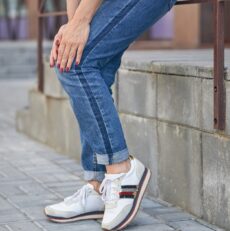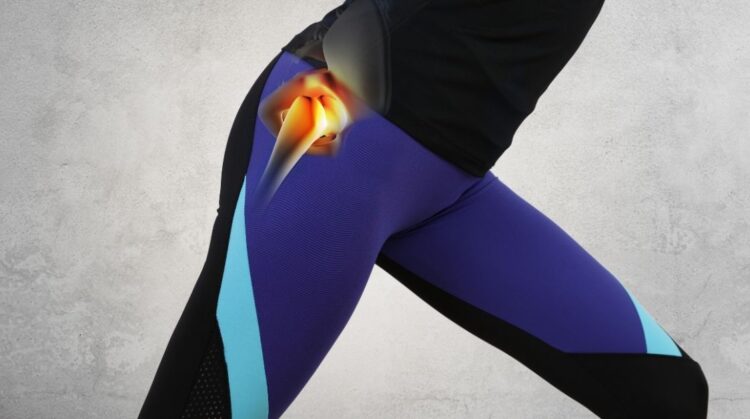
June 8, 2021
Tips for Joint care while at Home

Arthritis can lead to physical Join pain. Hip is a ball and Socket join and has a tendency to develop wear and tear of the hip join cartilage. Diseases such as a osteoarthritis & avascular necrosis can lead to develop bone and bone contact. This is a very painful condition than can lead to having difficulty with normal daily activities.
Following are the sign of chronic hip pain that should trigger you to visit an orthopaedic surgeon.
With all the sitting we do in our daily lives, tight hips are a very common problem. From sitting at your desk in front of a computer, to sitting in your car in traffic, to sitting at home in front of the TV; all this sitting causes our hips to tighten and become weak. Sitting for long time shortens your hip flexors, a group of muscles located at the front of your hips, causing pain. Tight hip flexors also contribute to lower back soreness, another common complaint.
These are the 5 simple stretches that fixes the damage to your hip caused by sitting at one place :
Begin in a half kneeling posture by placing one knee down directly under the hip and the other foot should be in line with the knee, this will create the 90/90 position. Depending on the individual, the width of the front foot can be adjusted for balance.
Start in a quadruped position with your wrists stacked directly under your shoulders and hips over your knees. Keep your belly button drawn in toward your spine, back flat, and your right leg bent at 90 degrees. Lift your leg out to your right side, stopping at hip height.
Start standing next to a wall. Bring your body into a forward fold by hinging at your hips and bringing your fingertips to the floor. Lift your left leg off the ground until your left foot is in line with your left hip. Pick your left hand up off the ground and slowly stack your left hip and shoulder over the right hip and shoulder. Flex your left foot so it’s active and slightly lean back into the wall to press both sides of your hips against it.
Start by sitting facing the wall. Lie down and bend your knees, adjusting your body so that your toes touch the wall. Lift your feet up and place your left foot on the wall, creating a 90° angle with your left knee. Then, cross your right ankle over the lower part of the left thigh. Flex both feet. Place your right hand on your right thigh and gently press it open. If you’d like a deeper stretch, scoot your hips a little closer to the wall. If you’d like less of a stretch, scoot your hips away from the wall.
Begin sitting in front of the wall with your knees bent. Lie down on your back and straighten your legs up the wall. The closer your hips are to the wall, the deeper the stretch. Feel your glutes and hamstrings release.
Whether you’re experiencing hip pain from osteoarthritis or a different condition, you know how difficult it can be to complete everyday tasks. The joint inflammation and swelling can hinder your movements when you walk, bend, and turn.
Fortunately, there are a few things you can do at home to relieve this hip pain. Keep reading to learn more about how to reduce your pain and get back to your life.
Starting your day with a few simple hip exercises or non-impact workouts can help increase the range of motion in your hip and reduce pain. Loosening your muscles will activate them to make the rest of your day less painful.
In addition to exercise, you’ll want to be sure to stretch your affected hip. Stretching the muscles can give you some relief from the pain.
Icing your hip will help reduce the inflammation in the joint and decrease pain. Wrap an ice pack in a towel and apply it to your hip for 20 minutes approximately five times per day
While you want to avoid a hot bath if your hip pain is caused by bursitis, warming a hip joint affected by arthritis can soothe the joint.
Strengthening your inner and outer things can provide more support for your hips so your body elies more on your thigh muscles than your hips.
Regular exercise is one of the best ways to protect your hips as you age. Not only will your workouts keep them mobile and strong, but they’ll also keep your weight in check. However, if you’re not careful, some common workout mistakes could be undoing your good hip work.
These are the most 4 workout mistakes that results to hip pain, one should avoid these mistake while exercising.
When you lean your torso forward, you put too much stress on the fronts of your hips and aren’t engaging your core and glutes correctly. The extra stress on your back and hips can cause a lot of pain in those areas.
Sticking your butt above your hips creates an arch in your low back. “This causes you to over work your hip flexors, which become short and tight over time.
Is your front knee caving in toward your big toe? If so, you’re overusing your outer quad, IT band, and lower hamstring, where the muscle attaches to the knee, says David Reavy, physical therapist and owner of React Physical Therapy in Chicago. “Over time, this creates too much internal rotation in your hips, which can cause pinching on the inside of your hip joint and lead to inflammation or bursitis.
When you train this muscle to bear down, it force the thigh bone forward. Putting more pressure on the front of the hip. Which is vulnerable to injury. Constantly squeezing the gluts can lead to strain and pain in your hips and low back.